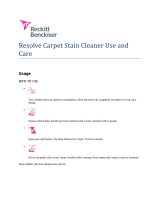Start just before the damaged area and stitch the braids together.
Extend the stitches just beyond the damaged area and then secure
them with a knot. Try to duplicate the thread color and use the
same size stitch originally used in sewing the braid.
CLEANING
Vacuum regularly. Do not shake or beat the rug since this treatment could damage it. Clean
spills immediately by blotting with a cloth or sponge. Remove any grease spots with ordinary
dry cleaning solvents. To learn how to remove specific stains, view our printable cleaning
guide.
Professional or "in home" periodic cleanings using the power spray-extraction carpet cleaning
method are recommended. Allow to dry flat on the floor. Clean one side at a time and allow it
to dry before reversing to clean the other side.
ALWAYS CHECK FOR COLORFASTNESS BEFORE CLEANING ANY RUG
Using a damp handkerchief, blot an area of the rug. If any dye comes off on the handkerchief,
the dyes may run during cleaning.
CHOOSE YOUR PROFESSIONAL CLEANER CAREFULLY
• Be sure your cleaner knows how to clean your particular type of rug. Cleaning a Kelim,
hand knot or braid is a lot different from cleaning wall-to-wall carpet!
• Inspect the rug with the cleaner. Note existing stains and damage before it is cleaned.
• Get a signed receipt for the work to be done and a guarantee, if possible, that it will be done.
• Make sure the cleaner can afford an insurance claim should something go wrong.
GENERAL CLEANING TIPS
As a general rule, the safest recommendation we offer regarding cleaning any type of rug is to
have it done professionally using the steam extraction method.
The frequency of cleaning will vary according to the traffic a rug receives. Just like clothing,
rug should not be cleaned either too often or too seldom. Caked on dirt is difficult to remove.
Note that latex backed rugs (this includes almost all hand hooked rugs) must not be cleaned
using petroleum based solvents. The solvents destroy the latex glue on the back of the rugs.
The rug will lose its body and the pile will become loose when solvents are used for cleaning.







